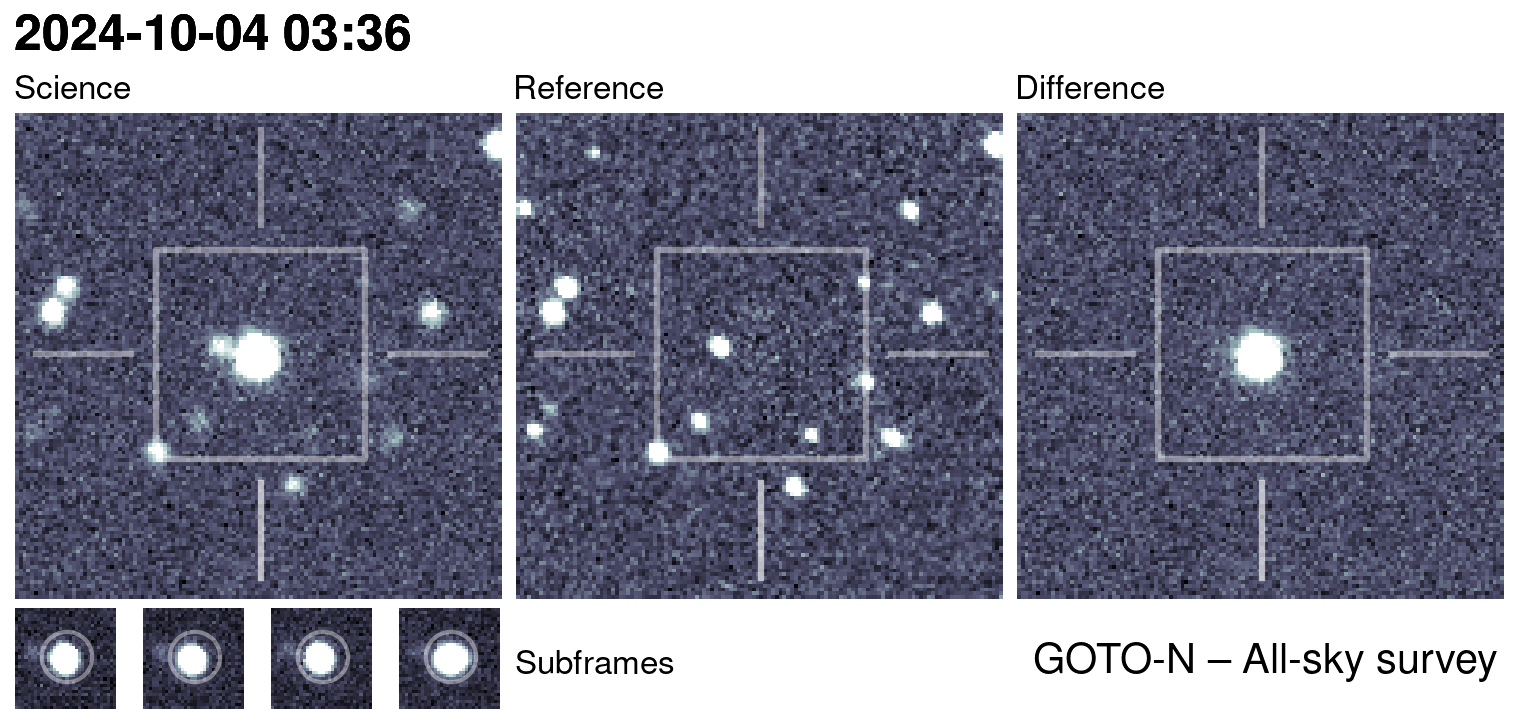Two years ago, a team of astronomers requested help from citizen scientists around the world for the Kilonova Seekers Project. Launched in July 2023, the endeavor tasks volunteers with parsing through all-sky survey images captured daily by telescopes on opposite sides of the planet known as the Gravitational-wave Optical Transient Observer (GOTO).
Within six months, Kilonova Seekers’ over 2,000 volunteers contributed more than 600,000 classifications to researchers, resulting in a total of 20 new discoveries. Now, astronomers have announced the project’s first major published find in Astronomy & Astrophysics: a brilliant exploding star observed in near real-time. Now known as GOTO0650, astronomers have determined the cosmic body is a cataclysmic variable star—one whose brightness increased by 2,500 times in just two days.
Animation of the GOTO0650 outburst, made from GOTO’s all-sky survey images. Credit: GOTO, T. Killestein, University of Warwick and K. Ulaczyk
A cataclysmic variable star isn’t technically a single object. Instead, it’s a compact binary system composed of a white dwarf stealing matter from a nearby donor star. Occasionally, that matter reaches a critical temperature and density inside the gas disc encircling the white dwarf, resulting in a blinding burst of light and energy.
According to Kilonova Seekers Project co-lead and University of Warwick astronomer Tom Killestein, the discovery could easily have been missed among the many other night sky objects without the citizen scientists’ help.
“Remarkably, public volunteers identified this star as an object of interest within 3.5 hours of the image being taken by the GOTO telescopes,” Killestein explained in a statement, adding that the involvement from volunteers “didn’t stop there.”
“There was a huge follow-up response from the public,” he continued. “It was flagged for further observations from the Swift and Einstein Probe space observatories, and GOTO0650 was bright enough for amateur astronomers to take impressively high-quality observations of with their own equipment, which formed a key part of the paper and really [helped] us understand the object.”
 The discovery image that the Kilonova Seekers volunteers first saw of GOTO0650 when it went into outburst. The science, reference, and difference images are shown: the “science” image taken on the night of discovery, the “reference” image taken a few months prior under the best sky conditions, and the “difference” image which uses an algorithm to subtract out all objects which have not changed in brightness between the science and reference. The very bright star in both the science and difference images is the object itself – it brightened by about a factor 2500x. Discovery Image Credit: GOTO, T. Killestein, University of Warwick
The discovery image that the Kilonova Seekers volunteers first saw of GOTO0650 when it went into outburst. The science, reference, and difference images are shown: the “science” image taken on the night of discovery, the “reference” image taken a few months prior under the best sky conditions, and the “difference” image which uses an algorithm to subtract out all objects which have not changed in brightness between the science and reference. The very bright star in both the science and difference images is the object itself – it brightened by about a factor 2500x. Discovery Image Credit: GOTO, T. Killestein, University of Warwick
Thanks to the quick response from volunteers, astronomers had enough time to collect a notably complete dataset on the star that included X-ray, UV, and spectroscopy measurements along with visual observations from amateur astronomers. From these, it appears that GOTO0650 is what’s known as a “period bouncer,” a rarely spotted cataclysmic variable star in its final state.
GOTO0650 is an exciting find for professional space observers, but for everyday Kilonova Seekers like Svetoslav Alexandrov in Bulgaria, it’s something else entirely.
“Traffic in Sofia, Bulgaria, is always awful during the mornings so I have to pass time on the bus somehow, and contributing to citizen science is an excellent way to do that,” he said, adding that he “literally screamed with joy” when he learned that his idle star searching would lead to a research paper co-authorship.
“I’m certain that people on the street raised their eyebrows when they saw me screaming and dancing, but I didn’t care,” said Alexandrov. “I knew I am a co-discoverer of something significant, and this was all that mattered.”

More deals, reviews, and buying guides
